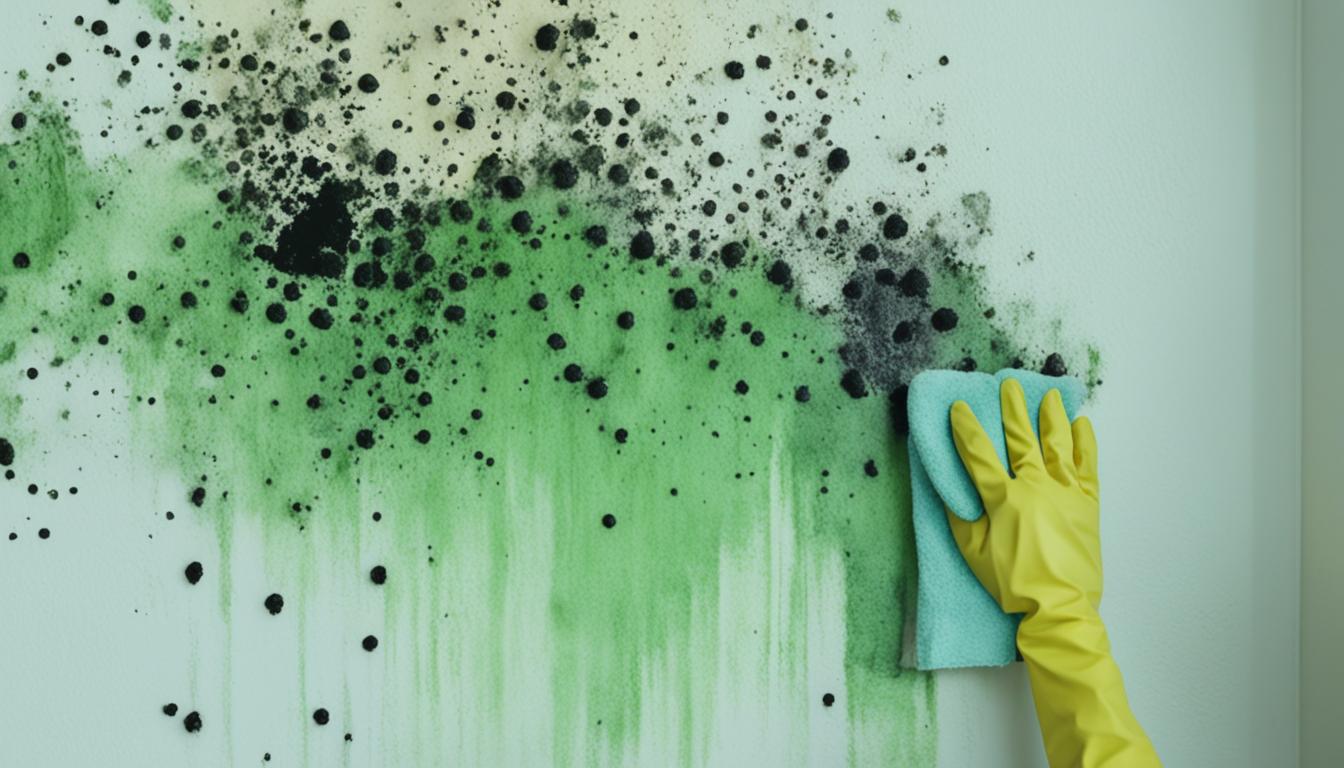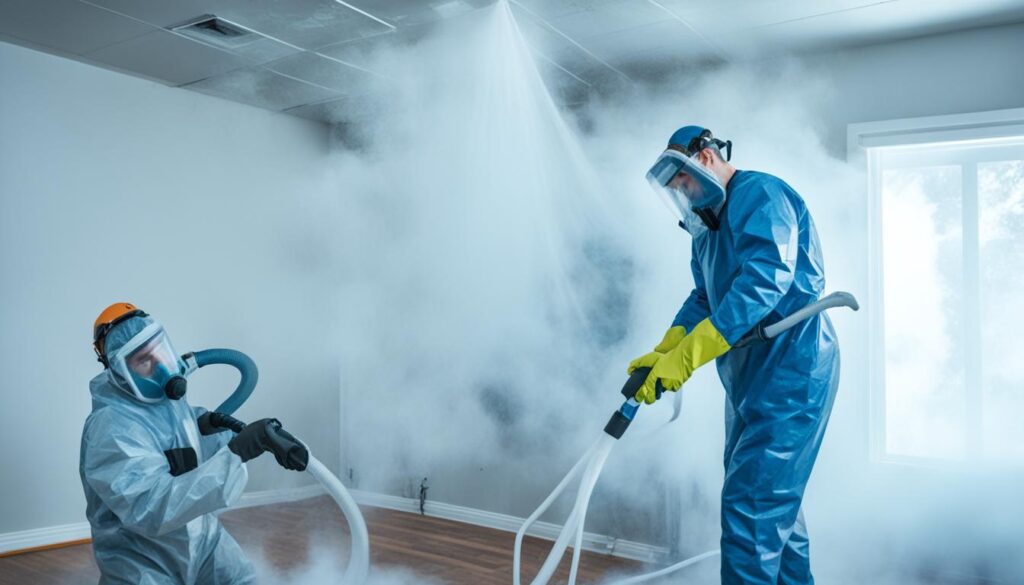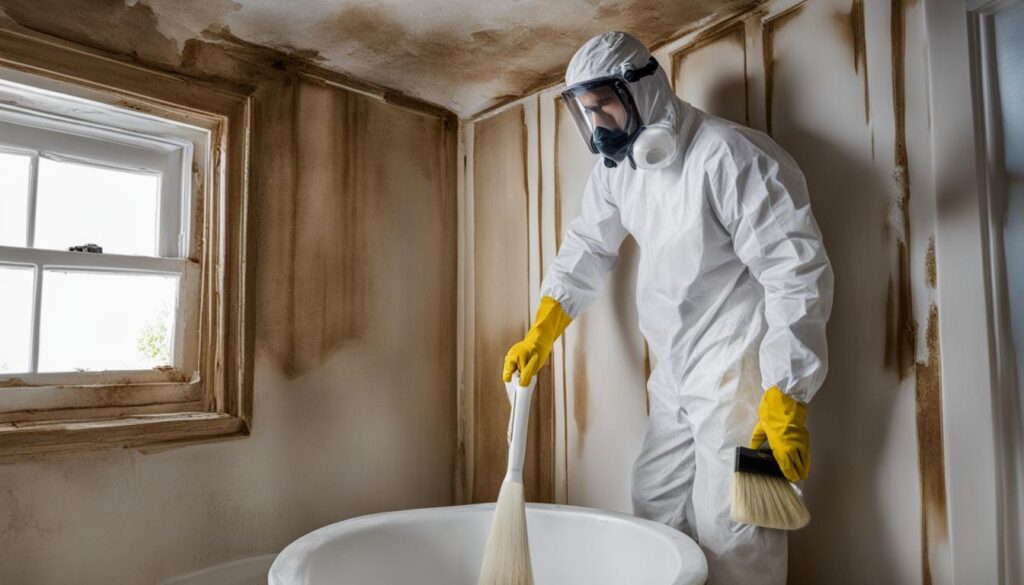
Mold Removal Guide Before Painting Walls
Are you planning to give your walls a fresh coat of paint? Before you pick up that paintbrush, it is crucial to address any mold growth on the walls. Painting over mold can lead to serious consequences, both in terms of aesthetics and health. In this guide, we will explore the importance of removing mold before painting and provide you with useful tips on how to ensure a mold-free surface for a successful painting project.
Key Takeaways:
- Removing mold before painting is essential to avoid potential health risks and structural damage.
- Mold can grow on walls due to moisture issues, poor ventilation, and water damage.
- Preparing for mold removal involves taking necessary safety precautions, gathering the right tools, and creating a plan of action.
- Various methods can be used to remove mold, including DIY approaches and professional mold remediation techniques.
- Preventing future mold growth requires addressing moisture issues and improving ventilation in the home.
Understanding Mold Growth on Walls
When it comes to maintaining a healthy and aesthetically pleasing living environment, dealing with mold growth on walls is crucial. It not only poses potential health risks but can also lead to significant structural damage if left untreated. In this section, we will explore the common causes of mold growth on walls and the importance of removing mold before painting.
Mold growth on walls typically occurs due to various factors, including:
- Moisture issues: Excess humidity or water leakage can create the perfect breeding ground for mold. Whether it’s a leaky pipe or poor ventilation, any source of moisture can promote mold growth on walls.
- Poor ventilation: Insufficient airflow and lack of proper ventilation can contribute to the accumulation of moisture, creating an environment that fosters mold growth.
- Water damage: Any past water damage, such as flooding or leaks, can provide the necessary conditions for mold to thrive on walls.
Mold on walls not only affects the visual appeal of your space but also poses potential health risks. Exposure to mold spores can cause allergic reactions, respiratory problems, and worsen existing conditions such as asthma or allergies. Additionally, mold can gradually weaken the structural integrity of your walls, compromising their stability.
To fully grasp the extent of mold growth on walls, it’s essential to understand how mold spreads and thrives on surfaces. Mold spores are microscopic and float in the air. When they land on damp or moist surfaces, they can quickly multiply and form visible mold colonies. The porous nature of walls allows mold to penetrate beneath the surface, making it challenging to eradicate completely.
Removing mold from walls is critical to ensuring a safe and healthy living environment. It not only eliminates health risks but also prevents further damage to your walls. In the next section, we will discuss the necessary steps to prepare for mold removal before painting.
Preparing for Mold Removal
If you’ve discovered mold growth on your walls, addressing the issue before painting is crucial. Pre-painting mold removal not only ensures a smooth and flawless paint application but also helps eliminate potential health risks associated with mold exposure. Before diving into the mold removal process, it’s essential to take the necessary precautions, gather the right tools and materials, and create a plan of action.
Safety First
Mold remediation for painting involves handling potentially harmful substances, so prioritizing safety is paramount. Before starting the mold removal process, follow these precautions:
- Wear protective clothing such as gloves, goggles, and disposable coveralls to minimize direct contact with mold spores.
- Ensure proper ventilation by using fans and opening windows to prevent the accumulation of mold spores in the air.
- Consider using a respirator or a mask with a high-efficiency particulate air (HEPA) filter to avoid inhaling mold spores.
Gather the Right Tools and Materials
To effectively remove mold before painting, you’ll need a few key tools and materials. Collecting these items beforehand ensures a smoother and more efficient process. Here are some essential items to have:
- Scrub brush or sponge
- Bleach or mold cleaner (choose one that is safe for the surface you’re treating)
- Plastic sheets or tarps to protect surrounding areas from potential debris and cleaning solutions
- Disposable garbage bags for proper disposal of contaminated materials
- Appropriate cleaning agents for the type of surface affected by mold
Create a Plan of Action
Before beginning the mold removal process, it’s important to have a clear plan in place. Assess the extent of the mold growth and determine the scope of the project. Identify the areas that require mold treatment before painting, whether it’s a single wall or an entire room. Break down the project into manageable sections and set realistic goals for each session of mold removal. Creating a plan helps keep you organized and ensures that no areas are overlooked.
Now that you’ve taken the necessary safety precautions, gathered the right tools and materials, and created a plan of action, you’re ready to tackle the mold removal process. The next section will detail various methods for effectively removing mold from walls before painting, both through do-it-yourself approaches and professional mold remediation techniques.

Methods for Mold Removal
When it comes to removing mold from walls before painting, there are various methods you can consider. Whether you prefer a DIY approach or opt for professional mold remediation, it’s important to choose the best way to remove mold before painting to ensure a clean and healthy surface. Here are some mold cleaning tips before painting:
DIY Mold Removal
If you’re confident in tackling the mold removal yourself, there are a few common household items that can effectively help eliminate mold:
- Vinegar: Known for its natural antimicrobial properties, vinegar can be used to remove mold. Mix equal parts vinegar and water in a spray bottle and apply it to the affected areas, allowing it to sit for a few hours before scrubbing with a brush.
- Bleach: Diluted bleach can also be effective in removing mold. Mix one cup of bleach with one gallon of water and use a sponge or brush to scrub the mold-infested surfaces. Ensure proper ventilation while using bleach and be cautious of its potential to discolor certain materials.
- Hydrogen Peroxide: Hydrogen peroxide is another DIY option for mold removal. Simply spray a 3% concentration hydrogen peroxide solution onto the mold-infested areas and let it sit for 10 minutes. Afterward, scrub the surfaces with a brush or sponge.
It’s important to note that while these DIY methods can be effective for small-scale mold problems, they may not be sufficient for extensive or recurring mold growth. It’s always advisable to consult a professional if you’re uncertain about the severity of the mold issue or if it covers a large area.
Professional Mold Remediation
If you’re dealing with significant mold growth or have concerns about your ability to remove it effectively, professional mold remediation is the best way to ensure thorough and safe removal. Mold remediation experts have the necessary equipment, expertise, and knowledge to handle mold removal professionally.
“Professional mold remediation offers a comprehensive solution for eliminating mold before painting. Trained professionals use specialized equipment, such as HEPA air filters, negative air machines, and containment barriers, to contain and remove the mold effectively. They also have access to commercial-grade antimicrobial solutions that can prevent future mold growth.”
By opting for professional mold remediation, you can have peace of mind knowing that the best approach is taken to address the mold issue, ensuring a safe and healthy environment for painting.
| DIY Mold Removal | Professional Mold Remediation |
|---|---|
|
|
Keep in mind that mold removal should be done prior to painting to ensure a clean surface and prevent the spread of mold spores. If you’re unsure about the best approach for your specific mold situation, consulting a professional mold remediation service is always a wise choice.

Preventing Future Mold Growth
Once you’ve successfully removed mold from your walls, it’s important to take proactive measures to prevent its regrowth. By addressing moisture issues, improving ventilation, and maintaining proper humidity levels in your home, you can greatly reduce the chances of mold appearing again.
Here are some effective mold prevention tips:
- Control Moisture: Identify and fix any sources of water leaks or excessive moisture in your home. This could include repairing plumbing leaks, improving drainage around your property, or using dehumidifiers in humid areas.
- Improve Ventilation: Ensure that your home has proper ventilation in areas prone to moisture, such as bathrooms, kitchens, and basements. Use exhaust fans and open windows when necessary to allow for air circulation.
- Maintain Proper Humidity: Keep the humidity levels in your home between 30-50%. Use a hygrometer to monitor humidity levels and consider using a humidifier or dehumidifier to maintain an optimal range.
- Regular Inspections: Conduct periodic inspections of your walls, ceilings, and other susceptible areas for any signs of water damage or mold growth. Early detection can prevent mold from spreading and becoming a larger problem.
- Proper Home Maintenance: Regularly clean and maintain your home, ensuring that it is free from dust, debris, and excess moisture. Pay attention to areas that are prone to dampness, such as basements, attics, and crawl spaces.
“Prevention is better than a cure.” – Benjamin Franklin
By following these mold prevention tips, you can create a healthier and mold-free living environment. Remember, mold can be a persistent problem, especially in areas with high humidity or a history of water damage. Taking preventative action is key to maintaining a clean and safe home.
| Mold Prevention Tips | Description |
|---|---|
| Control Moisture | Identify and fix any sources of water leaks or excessive moisture in your home. This could include repairing plumbing leaks, improving drainage, or using dehumidifiers. |
| Improve Ventilation | Ensure proper ventilation in areas prone to moisture, such as bathrooms, kitchens, and basements. Use exhaust fans and open windows for air circulation. |
| Maintain Proper Humidity | Keep humidity levels between 30-50%. Use a hygrometer to monitor levels and consider using humidifiers or dehumidifiers as needed. |
| Regular Inspections | Conduct periodic inspections of walls, ceilings, and other susceptible areas for any signs of water damage or mold growth. |
| Proper Home Maintenance | Regularly clean and maintain your home, paying attention to areas prone to dampness, such as basements, attics, and crawl spaces. |
Conclusion
In conclusion, it is essential to prioritize mold removal before painting walls. As we have discussed throughout this article, addressing mold growth is not only vital for maintaining the aesthetic appeal of your walls but also for safeguarding the health and well-being of your household.
By neglecting to tackle mold before applying a fresh coat of paint, you risk exacerbating the problem, as mold can continue to thrive beneath the surface and potentially spread to other areas of your home. Moreover, painting over mold can lead to paint failure, causing peeling, bubbling, and discoloration.
To ensure a successful painting project, it is crucial to follow the necessary steps for mold remediation. This includes understanding the causes of mold growth on walls, preparing adequately for mold removal, utilizing proper methods, and implementing preventive measures to combat future mold issues.
If you find yourself dealing with extensive mold growth or are unsure about the best approach to mold removal, it is highly recommended to seek professional assistance. Fix Mold Miami is a reputable mold remediation service in Florida that can provide expert guidance and effective solutions for your mold-related concerns. Remember, taking proactive steps to address mold issues before painting will help you create a clean, healthy, and visually appealing living environment.




